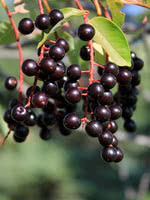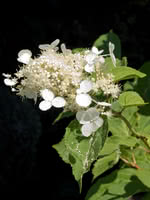Mon-Fri 9am - 5pm Mountain time
Western Chokecherry vs Panicle Hydrangea
Prunus virginiana var. demissa
Hydrangea paniculata
CUSTOM GROW
Western Chokecherry is a shrub or small tree commonly used for farmstead and field windbreaks.
It produces white flowers in the spring and edible dark purple fruit that matures between September and October. Its cherries are great for making for making jams, jellies or wine, but are not very palatable for raw eating.
Panicle Hydrangea is a large, broad-leaf, deciduous shrub that is prized for its ornamental appeal. It is easy to care for, long-lived, and cold-hardy.
Depending on the variety, its flowers change color throughout the blooming period. Make sure you water Panicle Hydrangeas regularly to achieve the most notable color change.
Western Chokecherry Quick Facts
Panicle Hydrangea Quick Facts
Toxicity: toxic to horses, cattle, etc.)

